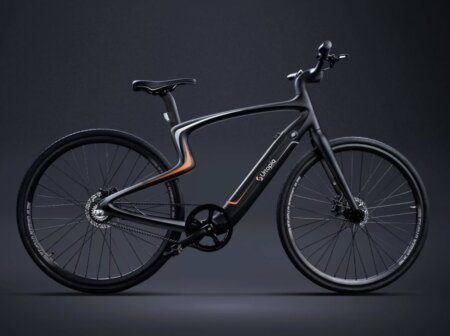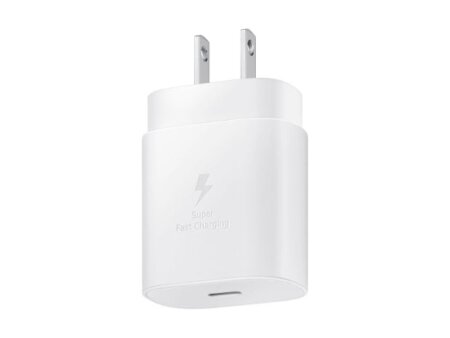This article presents the different styles of keyboard layout design that are most commonly available and sought after by users.
Almost everyone uses a keyboard if they own a desktop computer and even some laptop users who connect to multiple screens. It is easier to arrange the workspace with a wireless keyboard that is not attached to the screen (i.e. notebook keyboards), especially when there are multiple devices. Some users like me use an 8-core 16 thread CPU with Nvidia Quadro Pro workstation laptop connected to two external LED screens for 3D CAD design, and a separate full-sized keyboard.
Compact Keyboard Trends[tie_index]Compact Keyboard Trends[/tie_index]
In recent years, the terms TKL, 75%, 65%, 60% or 40% became popular and are used by brands such as Logitech and Razer. These keyboards are smaller than the original full-sized 104-key keyboards and are used for both work and gaming.
The trend seems to spark initially from gaming keyboards because the FPS (First-person shooter) gamers do not require a full-sized mechanical keyboard. The most commonly used keys are normally on the left side of the keyboard for the left hand, such as W, A, S, D. The next priority goes to the keys surrounding the W, A, S, D keys, which are the Q, E, R, F, Z, X, C, and SPACE for the left thumb. The right hand will always be on the mouse because taking the hands off the mouse is like dropping your gun in a gunfight.
Hence, the right side Numpad is the first to get “chopped” off since it has not much use, especially in FPS games. In fact, most games rely on the right hand on the mouse 100% of the time, including MMO. The result is the “TKL” keyboard, which we will discuss below.
Before we start…[tie_index]Before we start…[/tie_index]
Please keep the following points in mind before reading the discussions on keyboard layout design:
- This article lists the basic layout of each size because every brand and model has a more or less different configuration. Most modern keyboard layouts also have additional keys such as the function key (Fn), multimedia keys, backlight control, multi-device switching and also shortcut keys for the internet, and calculator. Some niche keyboards have emojis (or emoticons) shortcut keys with swappable keycaps.
- The “percentage” size (75%, 65%, etc) in our discussion is based on the estimated area compared to the full-sized 104-keys US keyboard. The details are listed in our comparison table on the typical keyboard layout.
- In our simulated CAD diagram below, we have based on the key on the standard 19mm center. This is the recommended design for the best typing speed and comfort.
- As the keyboards get smaller, the range of keys available become less predictable as every manufacturer has their own target market and usage.
List Of Keyboard Layouts[tie_index]List Of Keyboard Layouts[/tie_index]
- Full-Sized 104-Keys Keyboard
- 85% Compact 104-Keys Keyboard
- 82% TKL Keyboard
- 75% Keyboard
- 68% Keyboard
- 65% Keyboard
- 60% Keyboard
- 40% Keyboard
- EndNote
Full-sized 104-keys Keyboard [tie_index]Full-sized 104-keys US Keyboard [/tie_index]
If there is no constraint of desk space, the full-sized 104 keys keyboard is the safest choice and as it has every key included. This is keyboard layout suitable for all purposes, including work and play.
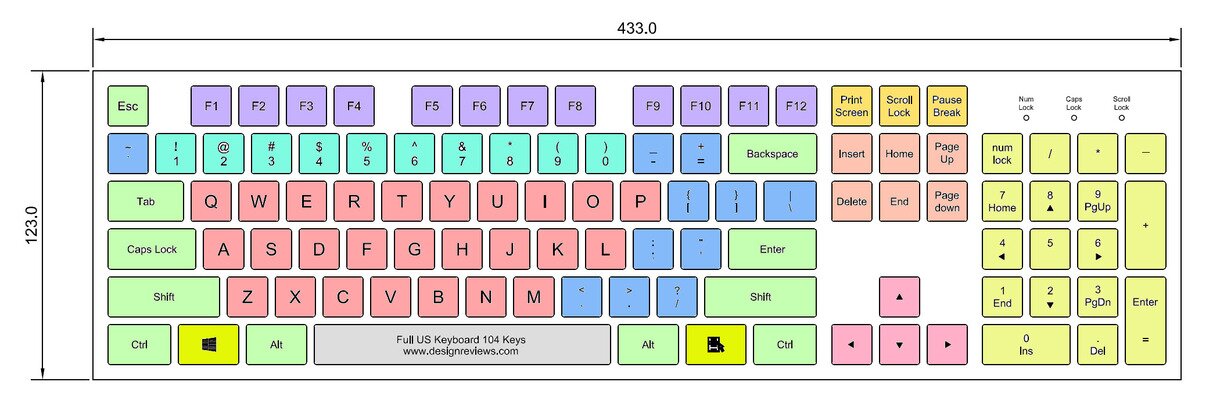
There are 104 keys on the standard full US keyboard, and most of them remain useful today except for a few:
- Pause or Break key
- Scroll Lock key
- Menu Key (bottom right, between the Alt and Ctrl keys)
The above is an example of the classic 104-key full-sized keyboards, but most modern keyboards have incorporated modern design and capabilities. Some models allow users to re-assign the keys, while others have additional keys for multi-device connection, sound switches, Fn Key, shortcut keys, and even a touchpad.
One of the best full-sized US is the Logitech MX Keys, which we are using to type this blog.

The MX Keys is a typical modern, full-sized keyboard suitable for both work and play, with the following features:
- Backlit keys with hand proximity sensor
- Multi-device connection
- Keycaps with finger indentation
- Light key press with tactile scissor-switches
- Support both Bluetooth and USB wireless connection (Logi Bolt)
- FN key for additional functions with F1 – F12 and “Scroll Lock” key.
- FN key support mouse gestures
- 17 customizable keys (highlighted below)

Compact 104-keys Keyboard [tie_index]Compact 104-keys US Keyboard [/tie_index]
Some users who feel the full keyboard is too big may prefer a compact version of the full-sized keyboards. The compact version rearranges the group of navigation keys including the arrows, “Home”, “End”, “Page Up”, “Page Down”, and navigation keys “Insert” and “Delete” to achieve a 15% reduction size.
We will call this the 85% keyboard as it is about 85% the size of the conventional 104-key full-sized keyboard.

Technically, there are only 101 keys as the design excludes the three physical keys “Print Screen”, “Scroll Lock”, and “Pause/Break” keys, but could keep their functions by combining with the other remaining keys.
The advantage of the compact 85% full keyboard is that it still has all the same functions, including the Numpad (or numeric keypad) but in a smaller form factor. For details of how we derived the 85%, please see our comparison table on the typical keyboard layout or see Table 1 below. The Numpad is essential for work, especially for accounting, excel worksheets, and data entry.

Buy Logitech K360 Compact Full Keyboard
As you notice, K360 has another modern keyboard with additional sound control keys, shortcut keys for browser, email and calculator. It is also worthy to note that the FN key replaces the Menu key, which is a common practice in modern keyboard layout.
Ten-Key-Less(TKL) Keyboard[tie_index]Ten-Key-Less(TKL) Keyboard[/tie_index]

The TKL (Ten-Key-Less) keyboard is an 82% keyboard variant for the gamer and the keyboard looks as if the Numpad is “chopped off“. When you compare the TKL to the compact full keyboard, there is only an additional 3% space savings, but you lose the entire Numpad. We opine that the compact full keyboard is better than the TKL because it is more versatile for both work and play.
In our analysis, the Compact 104 is 85% size but has almost the same number of keys, while TKL is 82% size but only 84% of the keys. For details of how we derived the percentages, please see our comparison table on the typical keyboard layout or refer to Table 1 below.
| FULL 104 | Compact 104 | TKL | 75% | 68% | 65% | 60% | 40% | ||
| Total Keys | 104 | 101 | 87 | 84 | 80 | 69 | 62 | 46 | |
| Length (cm) | 43.3 | 37.0 | 35.4 | 31.3 | 29.4 | 31.3 | 29.4 | 23.7 | |
| Depth (cm) | 12.3 | 12.3 | 12.3 | 12.3 | 12.3 | 10.4 | 10.4 | 8.5 | |
| Area (cm2) | 532.6 | 455.1 | 435.4 | 385.0 | 361.6 | 325.5 | 305.8 | 201.5 | |
| %Area Vs Full | 100% | 85% | 82% | 72% | 68% | 61% | 57% | 38% | |
| %Keys Vs Full | 100% | 97% | 84% | 81% | 77% | 66% | 60% | 44% | |
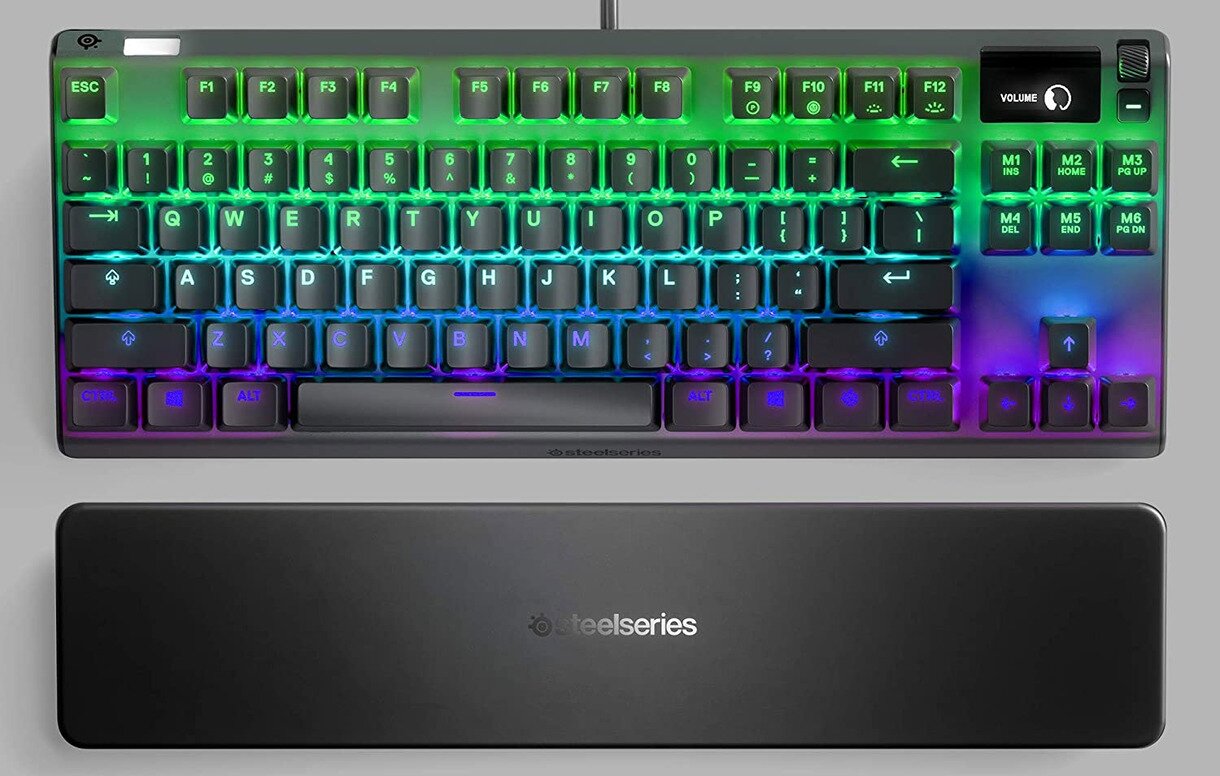
The Apex Pro TKL gaming keyboard is a popular choice for gamers how prefer USB connectivity with RGB illumination, OLED smart displays and an integrated command center for adjusting settings. It is built with aircraft-grade aluminium alloy for lifetime durability and stability and has a palm rest that attaches via magnets.
Buy Steelseries Apex Pro TKL
75% Keyboard[tie_index]75% Keyboard[/tie_index]
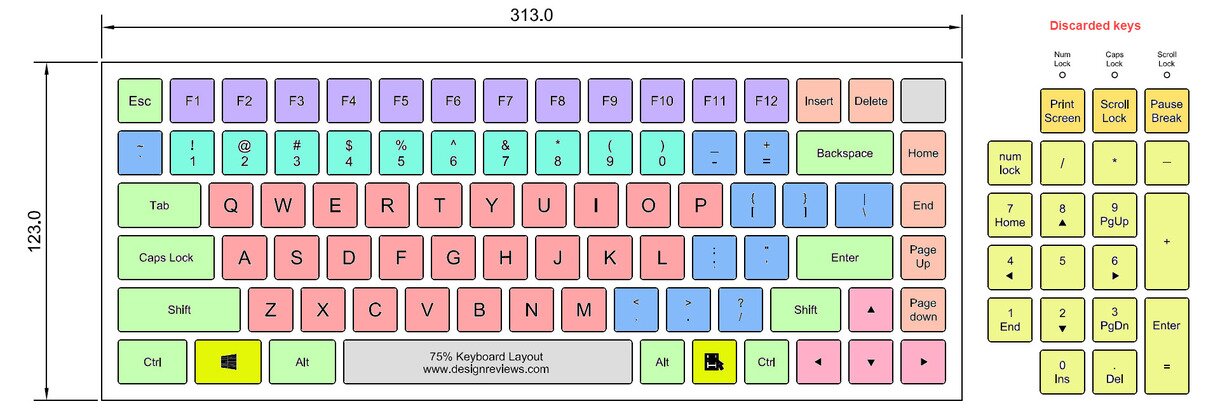
The 75% keyboard is a compact version of the 82% TKL keyboard, and differs by rearranging the navigation keys, “Insert” and “Delete” keys to save space. There is no “lost” of keys except for the Numpad, but there is an extra key at the top right corner for other options. For example, the designer could bring back the “Print Screen” key as a dedicated key, or lengthen the “Delete” or “Esc” keys.
Please note that the keyboard has 6 rows from top to bottom and 16 columns across, starting from ESC, followed by the 15 “F” function keys and the “Insert”, “delete” and finally the spare key.
For details of how we derived at 75%, please see our comparison table on the typical keyboard layout. Based on our estimate, the area of the 75% keyboard is effectively 72% of the full-sized keyboard.
68% Keyboard[tie_index]68% Keyboard[/tie_index]

The 68% keyboard differs from the 75% keyboard by having one column less. This means it has 6 rows from top to bottom but the columns are now roughly 15 columns across, starting from ESC, followed by the 15 “F” function keys and the “Insert”, “delete”. There is one less column for the 68% keyboard, which effectively ends at the “Backspace” or “Enter” key.
Based on our estimates at the comparison table on the typical keyboard layout, the 68% keyboard has a surface area of exactly 68% the size of the full-sized keyboard.
65% Keyboard[tie_index]65% Keyboard[/tie_index]

The 65% keyboard does not have the top F1 to F12 keys and has 16 columns or an additional column after the Enter key. Besides that, it is typical to keep the “Esc” key, and to shift or remove the other keys, such as the tilde key or “~`” key.
The result is roughly 16 columns across and 5 rows down. Based on the area calculated at the comparison table on the typical keyboard layout, the 65% keyboard is in fact 61% of the full-sized keyboard.

Buy Razer BlackWidow V3 Mini HyperSpeed 65% Wireless Mechanical Gaming Keyboard
60% Keyboard[tie_index]60% Keyboard[/tie_index]

The 60% keyboard is the same as the 65% keyboard with the F1 to F12 keys removed. There is also one less column, so in total there are roughly 15 columns across and 5 rows down. The above configuration shows the arrow keys and navigational keys removed, however, some manufacturers may swap with the modifiers or windows key. Another way is to shorten the “Shift” keys so that there is space for two more keys on the right side, as shown below. This will allow the arrow keys to be included.

In our option 2 example above, notice that the bottom second and third rows are ortholinear as opposed to staggered. For example, the Q and A are staggered, whereas the A and Z are ortholinear. In ortholinear layout, the arrangement of keys are in straight columns from top to bottom.
There is a learning curve to adapt to ortholinear layout keyboards, and there are several blogs and videos that discuss which is better. As the keyboards get smaller, ortholinear layout could be the solution in order to squeeze more keys into the limited space. The 60% keyboard is the smallest keyboard, which still has a fair number of options in the stores. This is not the same for 40% keyboard in the next section.
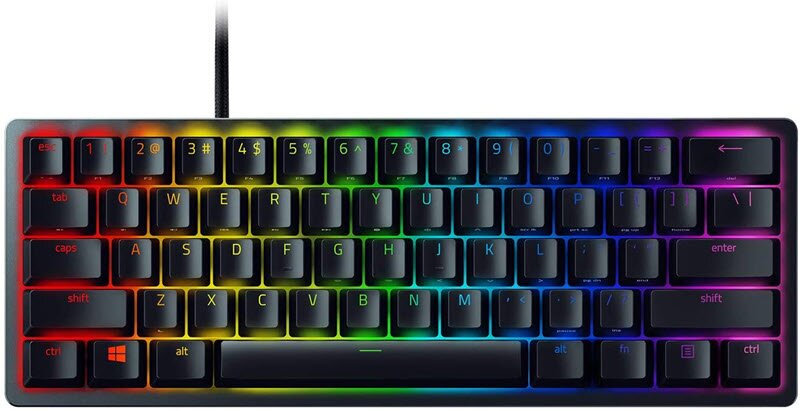
Buy Razer Huntsman Mini 60% Gaming Keyboard
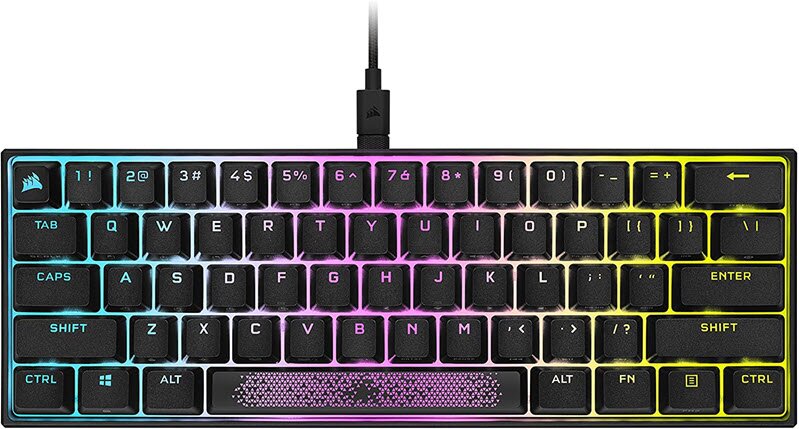
Buy Corsair K65 RGB MINI 60% Mechanical Gaming Keyboard
40% Keyboard[tie_index]40% Keyboard[/tie_index]

The actual size of the “40% keyboard” is about 38% of the full-sized keyboard based on our comparison table on the typical keyboard layout. Overall, there are roughly 12 columns across and 4 rows down, which is a significant reduction from the “60%” keyboard layout.
The above diagram shows only one of the many configurations that we have seen. As mentioned in the 60% keyboard layout section, there is an even higher chance to see ortholinear layout because it helps to save space. In ortholinear layout, the arrangement of keys are in straight columns from top to bottom as opposed to conventional layout where the keys are staggered.
Another issue is that as it gets smaller, it is more difficult to find such keyboards because there are many key configurations depending on the usage. This makes it difficult for manufacturers to bet on a fixed layout that will be acceptable by potential users.
Because of this problem, it makes sense to design a 40% keyboard that is programmable, and uses removable mechanical keys so that users can customise according to their needs.
One such example is the Drop Planck Mechanical Keyboard Kit V6, which is a DIY Compact 40% with ortholinear keyboard layout. It comes with Kaihua Hotswap Sockets, programmable PCB, USB-C port and a durable Aluminum Case.

Buy Drop Planck Mechanical Keyboard Kit V6 — DIY Compact 40% Ortholinear Layout
End Note[tie_index]End Note[/tie_index]
When defining keyboards by percentage (%) size, it refers to the approximate size of area relative to the full-sized keyboard. It is not referring to the number of keys versus 104 keys. In some keyboards above, designers can shrink or stretch the size of the modifier keys or space bar to accommodate more keys if deemed necessary.
We recommend buying a full-sized keyboard for office or work-related use, especially if it involves a lot of numbers, worksheets, and accounting. If there is desk space constraint, we recommend two options:
- Buy a compact, 104-key keyboard that is 85% of the full size.
- Buy a 75% or 68% keyboard and pair with a detachable Numpad (or numeric keypad), if required.
Read more:
Smart 2-in-1 Numeric Keypad and Calculator
3dconnexion Keyboard Pro vs Logitech MX Keys
Hardcore gamers would prefer sizes between TKL, 75%, and up to 60% keyboards. This normally depends on the type of games they are playing and it is not uncommon for gamers to have over one size keyboard. There is a different “weapon” for a different type of “mission”.
40% keyboards are very rare and mostly selected for special uses, such as speciality computing devices, such as consoles in train stations or servers.
Anyone can buy any keyboard, but it is important to note the missing keys, as smaller keyboard may also mean fewer keys, which may affect what you intend to do with the keyboard. Even if you can program two combo keys to replace a missing key, it will not be as efficient as having a single direct key.


